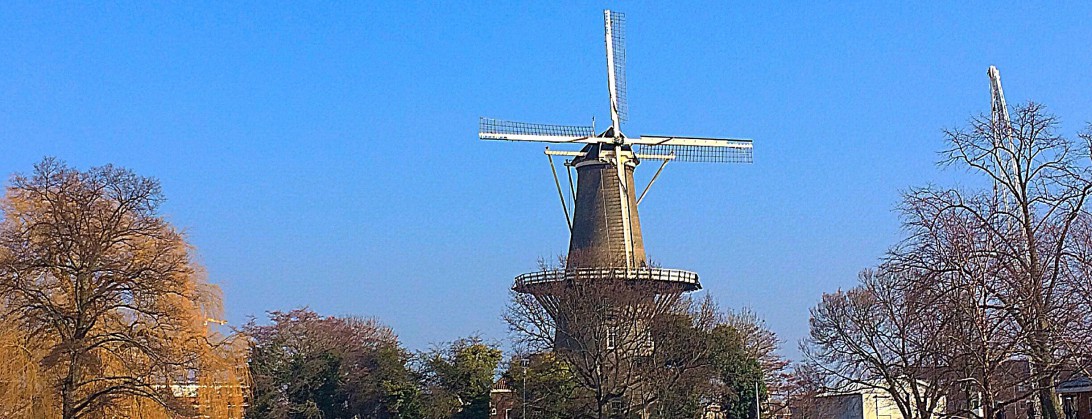Be prepared for a long and difficult journey though.
Since Adek Deny is trying to master the Dutch language she obviously comes to me with questions about how and why some things are as they are in Dutch language and grammar. As Dutch is my native language I accepted a lot of things when I learned the language over the years without explicitly thinking about the things I was taught. Frustrating for a new comer, because I have to think deeply and sometimes do not have a proper explanation at all.
I want to show you in this post some of the difficulties that one might experience, trying to learn the Dutch language. Those difficulties are based on my own experiences with the questions from Adek Deny.
1. The Dutch have a very difficult system with conjugating verbs
Learning to use verbs correctly in sentences can be a nightmare, it is so difficult that the Dutch themselves make lots of mistakes actually. I have this example from one of the most popular and best read Dutch blogs: Geenstijl. It states “betaald” while it should say “betaalt” because they mix up the writing of a past particle with the third person singular tense (there is also an extra other bonus mistake as you can see in the picture).
All media often make grammatical errors (maybe this might give you some comfort). Through Google you can find lots of websites that will try to give you the best explanations of the difficult matter of conjugating verbs.
2. The Dutch break have a habit of putting words in a sentence in a special order
Sometimes you think you can get away by your knowledge of the English language when creating your first sentences. Unfortunately, in some cases your knowledge of the English language is not applicable in Dutch. Have a look for example at this sentence: “I go to school tomorrow“. Knowledge of English language is not enough to make a correct Dutch sentence like “Ik ga naar school morgen” (although the Dutch will understand what you mean). The correct order would be: “Ik ga morgen naar school”. So besides that you already speak a language with news words and carefully have to think about the verbs to use, things can get extra complicated when at the same time you carefully have to consider the order in which you put the words in an sentence.
3. The Dutch break verbs apart
I never realised it myself, but there is something else strange going on with verbs. We break them apart in some circumstances. There are verbs like ‘aanzetten’ (= “to put on”) that suddenly are split when used in a sentence like ‘Ik zet de televisie aan” (= “I put on the the television”). Actually what happens is that the verb already contains a preposition (“aan”) that will be taken away from the ‘real’ verb (“zetten”).
4. Pronunciation of the Dutch is very unlike most languages
In Netherlands we have this mocking about to how to determine someone is not originally Dutch by having her or him pronounce the word “Scheveningen” (the name of a beach village located close to Den Haag). The Dutch used that trick in Second World War to discover secret German agents and soldiers.
I started to realise that the Dutch have many more unique (vowel) sounds, like “ui” as in “huis” (=”house”), “eu” as in “keuken” (= “kitchen”), but even more standard vowel sounds like “aa” are difficult to master, because the Dutch really like to prolong the sound, so don’t be afraid to hold the vowel and say a long “aaaaaaa” instead of a short “aa”. Trust me, it will make you sound more authentically Dutch.
5. The Dutch love to use in between and extra words
Also never realised it, but we Dutch use lots of extra words to create a sort of “cuty” effect or to make someone clear it is all not too serious (I tried to think about why we do that and I can not come up with a more satisfying explanation).
Use lots of words like “hoor” as in “Ja hoor”, “Nee hoor”, “Jammer hoor”. But there are so many other words, like “wel”, “nog”, “even”, “en zo”, “of zo” all difficult or impossible to translate in other languages. An example of a sentence using some of these words would be like: “Ik kan nog wel even doorgaan of zo” (= “I could continue like this’).
Some other tip to improve your authenticity as a Dutch speaking person: repeat some words lot. So when you leave friend or family, say “Doei doei” instead of “Doei” (=”Bye”) or say “Ja, ja” instead of “Ja” (=”Yes”).
6. De/ Het
Ok, so the Dutch have two defining articles “de” and “het” where the English only have one (=”the”). The positive side of the story is that this is one less than in German (“Der”, “Die”, “Das”), the bad news is that you must be prepared to study long time to learn what article to use in what case. There are so many ‘rules’ what to use in what instance, that it is probably easier to learn them by heart and expand your knowledge as you get more comfortable by learning Dutch.
There are more other difficulties with Dutch, so maybe one day I will expand the list later when Adek Deny comes with new questions. Be patient with your partner to teach him or her Dutch, because despite the difficulties I mentioned, you can absolutely learn Dutch and the Dutch will be very proud when you try to master their language! Mingle among the Dutch, watch television a lot or YouTube movies teaching Dutch, start with children books (like the famous “Nijntje”) and I am sure you will be doing fine learning the Dutch!















